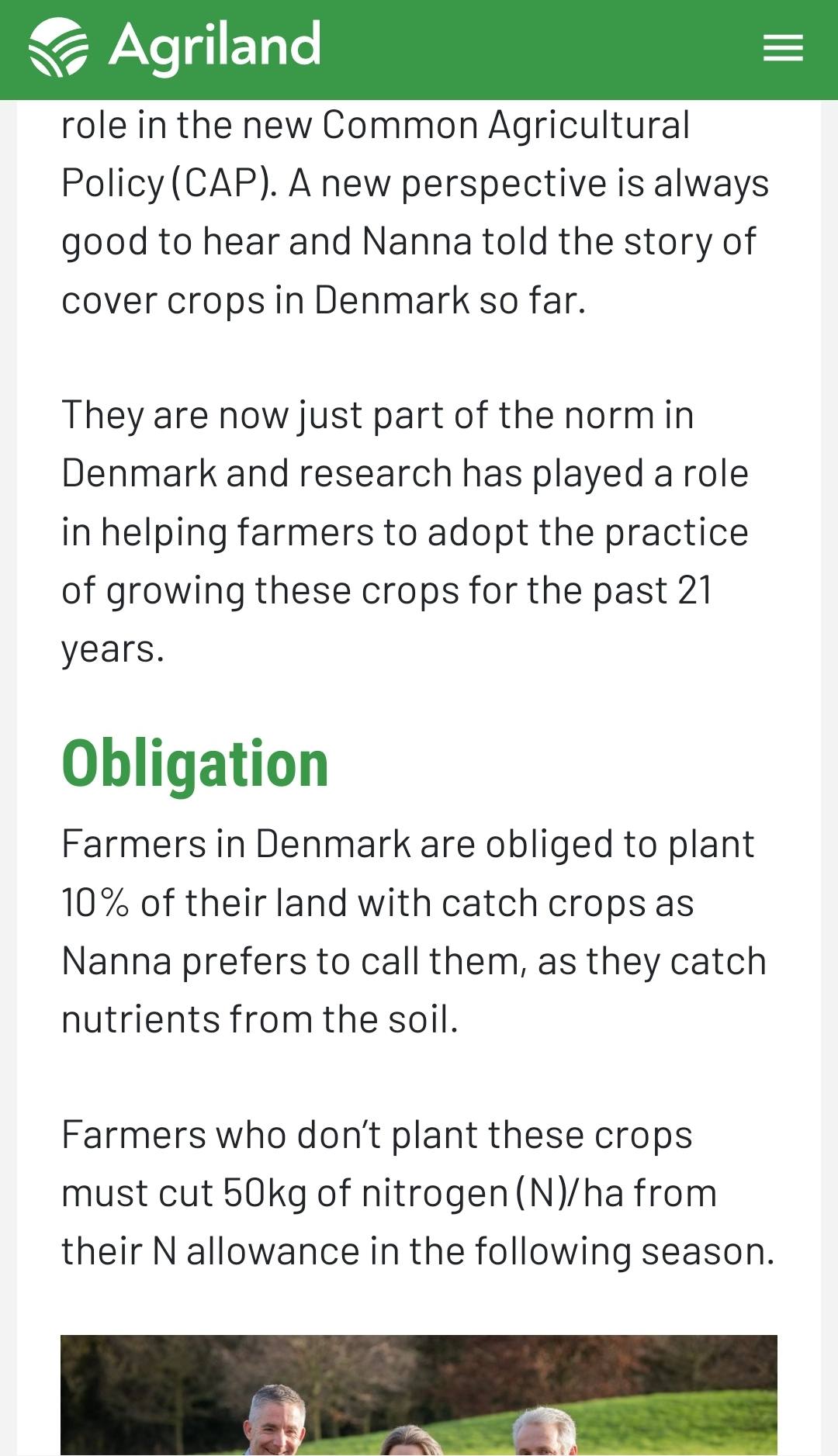Friday saw hundreds of tractors blocking main streets in Belgium as farmers protest environmental heavy-hand restricting nitrate agricultural application. What do you think their government will do to clear the streets? Do you think the protestors’ bank accounts/property will be seized and their farm loans will be called?
Announcement
Collapse
No announcement yet.
Massive Farm Protest in Belgium
Collapse
Logging in...
Welcome to Agriville! You need to login to post messages in the Agriville chat forums. Please login below.
X
-
Catch nutrients from the soil?Originally posted by Bin LurkingDo like Denmark?
https://www.agriland.ie/farming-news/tillage-conference-the-story-of-compulsory-cover-crops-in-denmark/
From the article

Can you explain this concept of catch?
Perhaps it is a translation error, and they mean to say catch nitrogen from the air?
Otherwise, catching nutrients from the soil ( as stated), is a perpetual motion machine.
Comment
-
Catch crops or cover crops can be either legumes or not or a mixture They can capture nutrients, reduce leaching, reduce surface erosion and nutrient loss. etc.Originally posted by AlbertaFarmer5 View PostCatch nutrients from the soil?
Can you explain this concept of catch?
Perhaps it is a translation error, and they mean to say catch nitrogen from the air?
Otherwise, catching nutrients from the soil ( as stated), is a perpetual motion machine.
Regenerative ag talks about cover/catch crops all the time. I am surprised you haven't heard of the concept as many of the mixed farms across the prairies have been talking about cover crops for many years.
A lot of Europe is still using intensive tillage and intensive amounts of fertilizer. So cover crops have potential to protect the soil and manage nutrient loss.Last edited by chuckChuck; Mar 17, 2023, 07:34.
Comment
- Reply to this Thread
- Return to Topic List
Comment